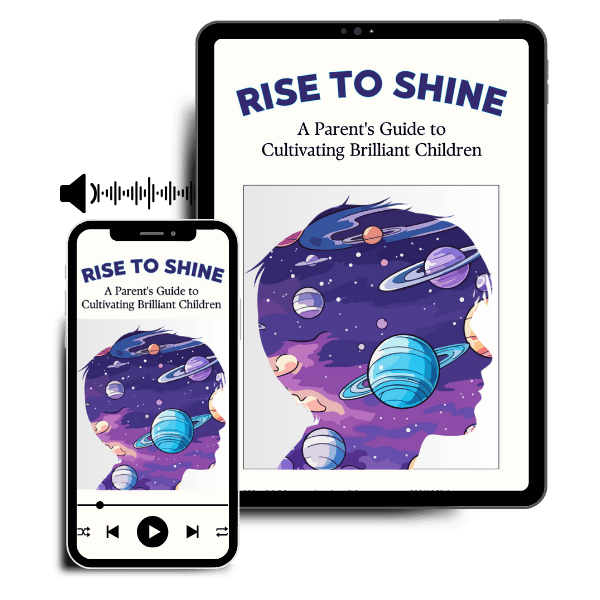The Growing Role of AI in Early Childhood Education


Artificial Intelligence (AI) has become a transformative force across various sectors from healthcare to finance and now it is making significant inroads into education. Early childhood education, a critical stage in human development, is not exempt from this technological evolution. This article explores the growing role of AI in early childhood education, highlighting its benefits, challenges, and future prospects.
AI in education refers to the use of machine learning algorithms and other AI technologies to create personalized and adaptive learning experiences. Historically, educational technology was limited to basic computer-assisted instruction. However, with advancements in AI, we now have sophisticated tools that can tailor educational content to meet the individual needs of young learners. AI-driven educational tools are capable of understanding a child’s learning pace, preferences, and difficulties, thereby offering customized learning paths.
The past few years have seen remarkable innovations in AI for early education. AI-powered educational tools and applications such as adaptive learning platforms, interactive learning apps, and robotic tutors are becoming increasingly prevalent. For instance, AI-driven apps like KidSense and SmartEdTech are designed to improve language skills and cognitive development through interactive and engaging activities. Case studies from various preschools show that these tools significantly enhance children’s learning experiences and outcomes.
One of the most significant benefits of AI in early childhood education is personalized learning. AI systems can analyze data from a child’s interactions and provide tailored educational content that matches their learning style and pace. This personalization enhances engagement and motivation, making learning more enjoyable for young children.
Moreover, AI can improve learning outcomes by identifying and addressing learning gaps early on. For example, AI can detect early signs of learning disabilities, enabling timely interventions and support. This early detection is crucial in ensuring that all children have the opportunity to succeed academically.
AI is being used in classrooms to support both students and teachers. In practical terms, AI can automate administrative tasks, allowing teachers to focus more on instruction and student interaction. AI tools can provide real-time feedback to students, helping them understand their mistakes and learn more effectively. Additionally, AI-driven platforms can suggest supplementary materials and activities to reinforce learning.
Integration of AI with traditional teaching methods creates a blended learning environment that leverages the strengths of both technology and human instruction. Teachers can use AI insights to adapt their teaching strategies and provide more targeted support to their students.
Despite its numerous benefits, the use of AI in early childhood education comes with challenges. Ethical considerations such as data privacy and the potential for biased algorithms must be addressed. Ensuring that AI tools do not replace human interaction but rather complement it is another crucial aspect. There is also the challenge of ensuring equitable access to AI technologies so that all children, regardless of their socio-economic background, can benefit from these innovations.
Looking ahead, the role of AI in early childhood education is poised to expand even further. Emerging trends suggest that AI will continue to evolve, offering even more sophisticated and intuitive learning solutions. Experts predict that AI will play a pivotal role in creating inclusive and accessible education systems that cater to the diverse needs of all learners.
Potential long-term impacts include the democratization of high-quality education and the creation of more engaging and effective learning environments. However, realizing this potential will require concerted efforts from educators, policymakers, and technology developers to address the associated challenges and ensure responsible implementation.
The integration of AI in early childhood education holds transformative potential. From personalized learning experiences to early detection of learning disabilities, AI offers numerous benefits that can enhance the educational journey of young learners. While challenges remain, the future of AI in education looks promising, with the potential to create more inclusive, effective, and engaging learning environments. As we move forward, it is essential for educators, parents, and policymakers to collaborate and harness the power of AI responsibly to shape the future of early childhood education.
Related Reading:
References:
1. What is the role of AI in early childhood education?
AI in early childhood education plays a pivotal role in enhancing personalized learning experiences. By leveraging AI technologies, educators can create tailored educational plans that cater to the unique learning needs and pace of each child. This helps in fostering a more engaging and effective learning environment, ensuring that children receive the support they need to develop essential skills from a young age.
2. How can AI improve learning outcomes for young children?
AI in early childhood education can significantly improve learning outcomes by providing adaptive learning tools that adjust to each child’s progress. These tools can identify strengths and weaknesses, offering targeted exercises and activities to address specific areas of improvement. This personalized approach ensures that children remain engaged and motivated, leading to better retention of information and overall academic success.
3. What are the benefits of using AI in early childhood education?
The benefits of using AI in early childhood education are numerous. AI can provide personalized learning experiences, enhance teacher-student interactions, and offer real-time feedback. Additionally, AI-powered tools can help identify learning disabilities early on, allowing for timely interventions. By incorporating AI, educators can create a more inclusive and supportive learning environment that caters to the diverse needs of young learners.
4. Are there any challenges associated with implementing AI in early childhood education?
While AI in early childhood education offers many advantages, there are also challenges to consider. These include ensuring data privacy and security, addressing the digital divide, and training educators to effectively use AI tools. Additionally, it’s important to strike a balance between technology use and traditional teaching methods to ensure holistic child development. Addressing these challenges requires careful planning and collaboration among educators, parents, and policymakers.
5. How does AI support teachers in early childhood education?
AI in early childhood education supports teachers by automating administrative tasks such as grading and lesson planning, allowing them to focus more on direct interactions with students. AI tools can also provide insights into student performance and learning patterns, helping teachers to identify areas where additional support is needed. This enables teachers to create more effective and individualized learning experiences for each child, ultimately enhancing the overall educational process.

Get Your Resources to Your Email Now!
Comment (1)
Anmelden
Thanks for sharing. I read many of your blog posts, cool, your blog is very good.